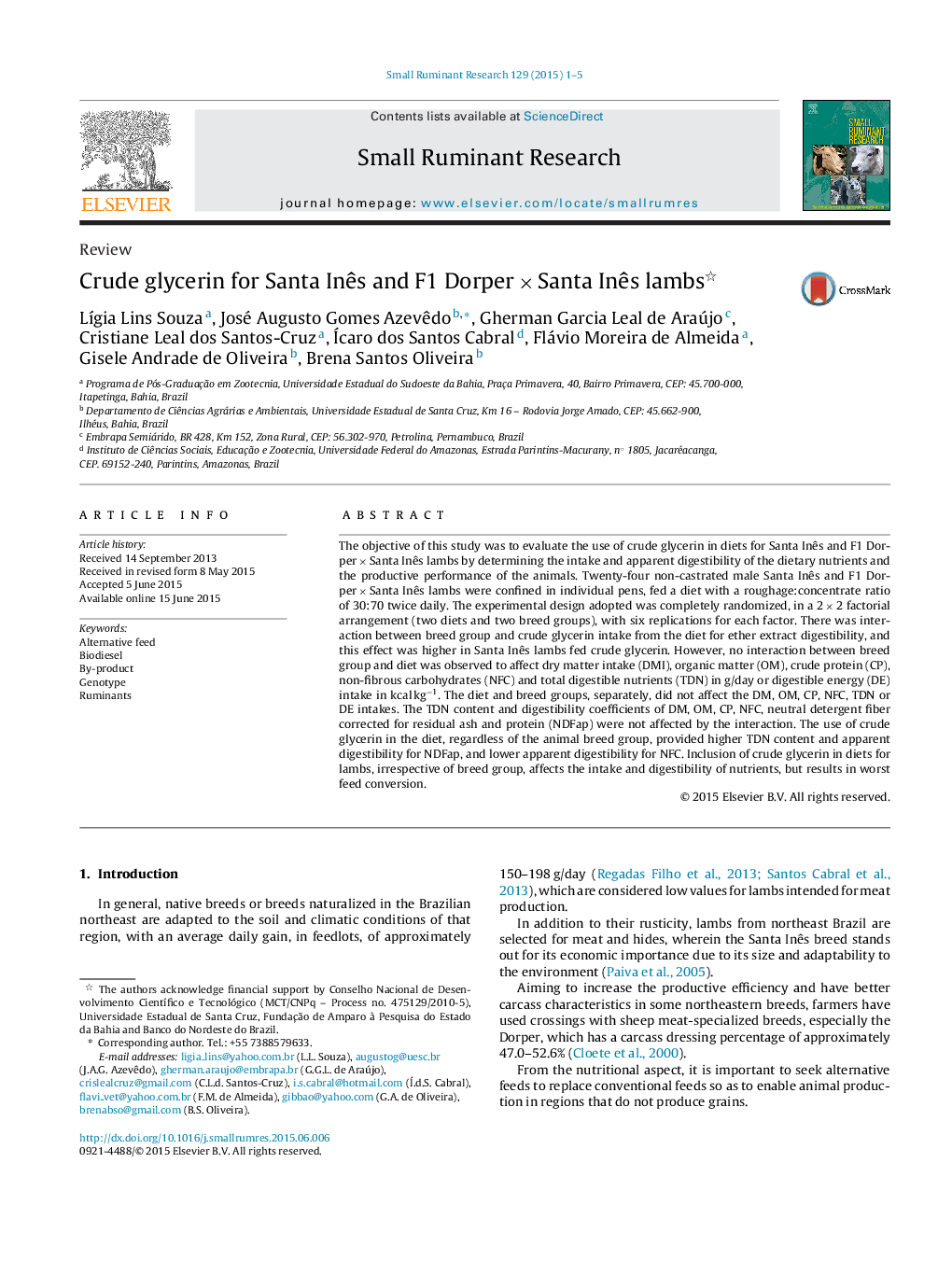| Article ID | Journal | Published Year | Pages | File Type |
|---|---|---|---|---|
| 5795462 | Small Ruminant Research | 2015 | 5 Pages |
â¢No interaction between breed group and diet was observed to affect intake.â¢The inclusion of CG in the diet of lambs does not compromise intake of nutrients.â¢The inclusion of CG in the diet of lambs does not compromise digestibility of nutrients.â¢The inclusion of CG in the diet of lambs does not compromise the performance of animals.
The objective of this study was to evaluate the use of crude glycerin in diets for Santa Inês and F1 Dorper Ã Santa Inês lambs by determining the intake and apparent digestibility of the dietary nutrients and the productive performance of the animals. Twenty-four non-castrated male Santa Inês and F1 Dorper Ã Santa Inês lambs were confined in individual pens, fed a diet with a roughage:concentrate ratio of 30:70 twice daily. The experimental design adopted was completely randomized, in a 2 Ã 2 factorial arrangement (two diets and two breed groups), with six replications for each factor. There was interaction between breed group and crude glycerin intake from the diet for ether extract digestibility, and this effect was higher in Santa Inês lambs fed crude glycerin. However, no interaction between breed group and diet was observed to affect dry matter intake (DMI), organic matter (OM), crude protein (CP), non-fibrous carbohydrates (NFC) and total digestible nutrients (TDN) in g/day or digestible energy (DE) intake in kcal kgâ1. The diet and breed groups, separately, did not affect the DM, OM, CP, NFC, TDN or DE intakes. The TDN content and digestibility coefficients of DM, OM, CP, NFC, neutral detergent fiber corrected for residual ash and protein (NDFap) were not affected by the interaction. The use of crude glycerin in the diet, regardless of the animal breed group, provided higher TDN content and apparent digestibility for NDFap, and lower apparent digestibility for NFC. Inclusion of crude glycerin in diets for lambs, irrespective of breed group, affects the intake and digestibility of nutrients, but results in worst feed conversion.
